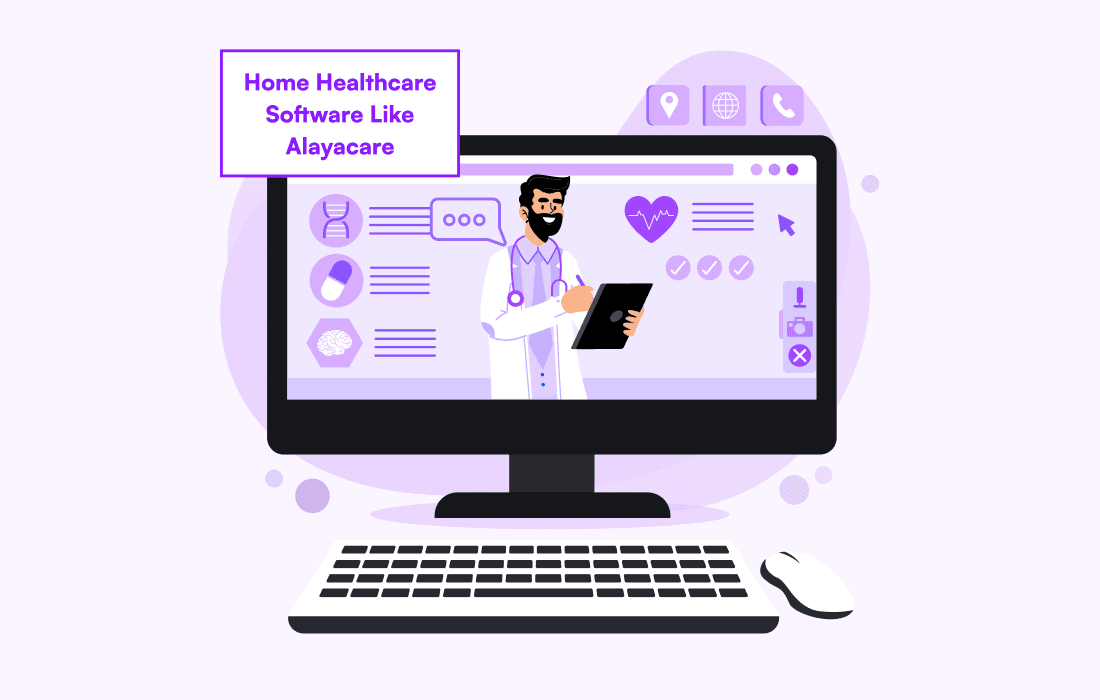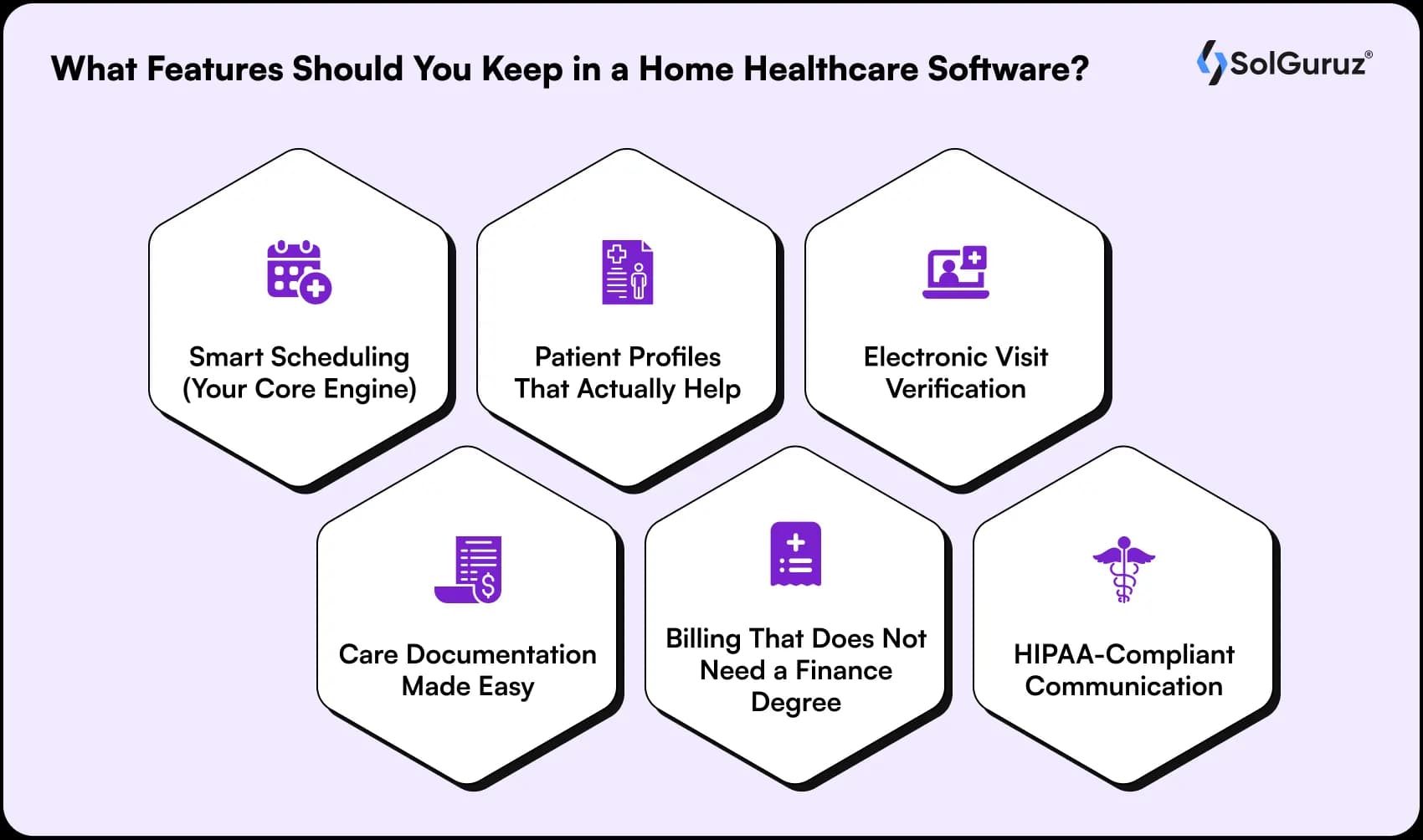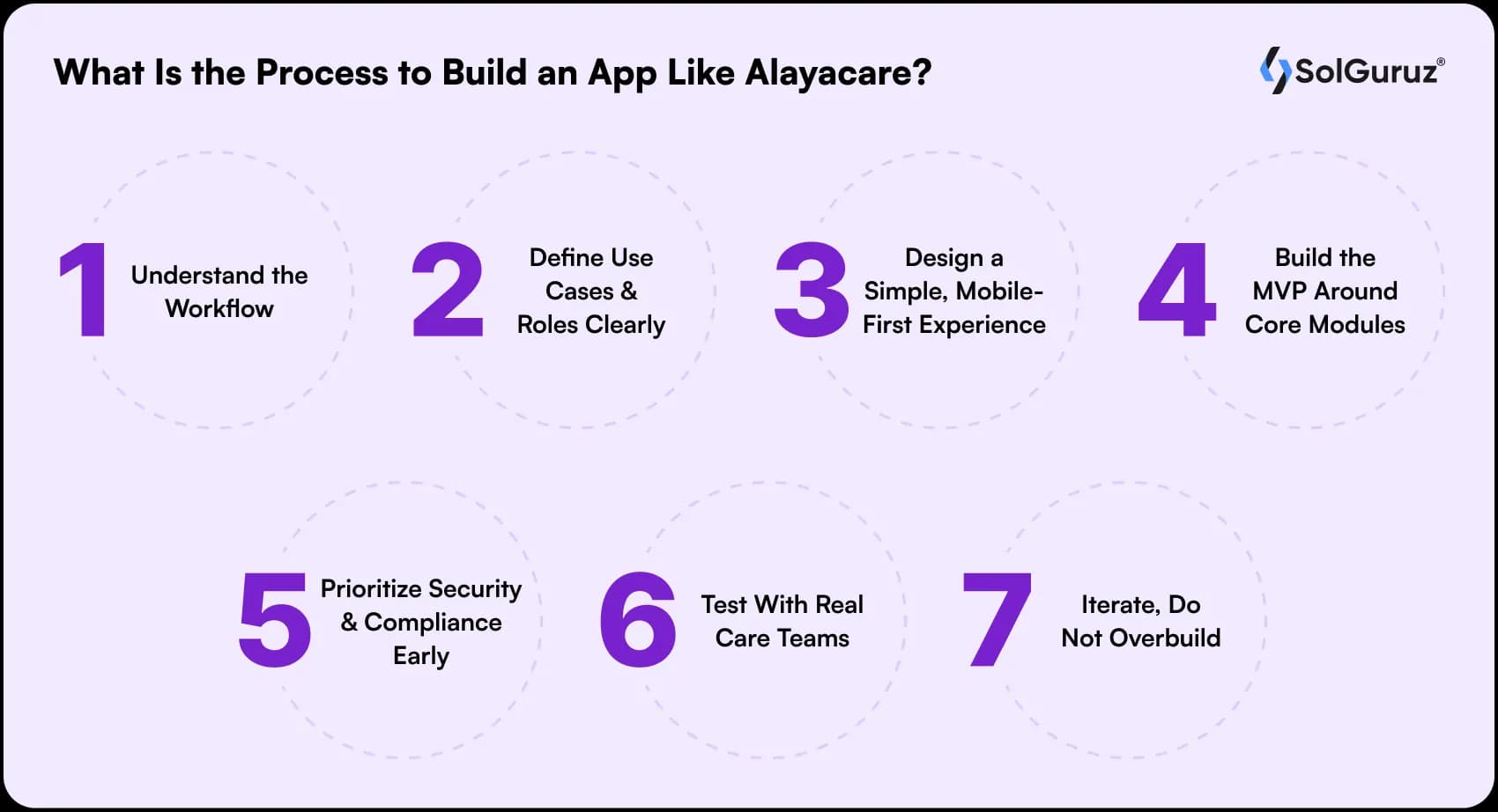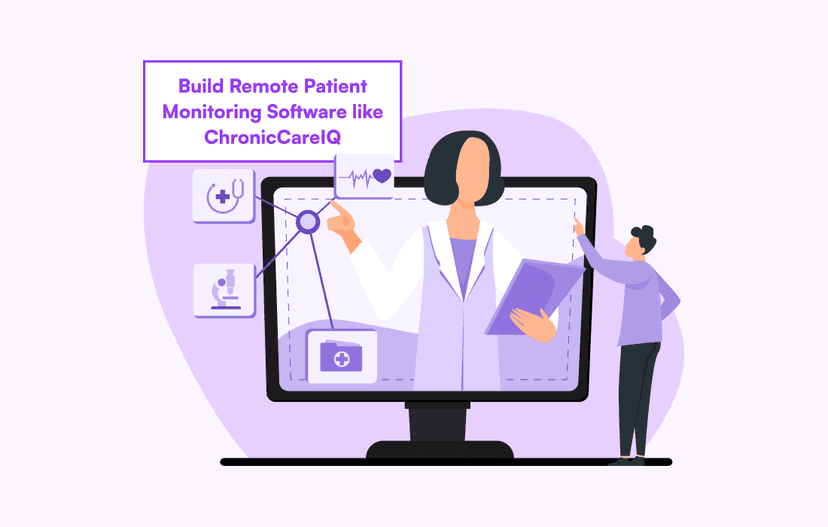How to Build a Home Healthcare Software Like AlayaCare
Explore how to develop a home healthcare platform like AlayaCare. A detailed guide packed with practical insights, feature breakdowns, and real-world cost estimates from healthcare app projects.

The last few years were very chaotic for me. (Not in a bad way)
The thing is, I have been very busy handling the requirements for custom software in the healthcare industry.
I mean, seriously!! What is going on?
There is so much demand for new upgrades and apps that solve basic issues.
Just take an example of home healthcare software. We have seen a high demand from healthcare providers looking to digitize their home care operations.
In fact, platforms like AlayaCare have proven that technology can make care delivery both personal and efficient.
But but but… building such a platform requires a deep understanding of healthcare workflows.
This guide walks you through everything you need to know. I will cover the must-have features and development roadmap, including cost breakdowns from my personal experience.
Table of Contents
Is Home Healthcare Software Like Alayacare a Good Investment?
If you ask me, absolutely yes. But with a catch.
It is a great investment only if you understand the business side of healthcare.
See, home healthcare is one of the fastest-growing segments in the medical industry.
And as populations age, chronic illnesses rise. In such cases, patients will surely prefer receiving care at home. And providers are under pressure to make that transition efficient and compliant.
Even smaller agencies are now investing in platforms that automate scheduling and patient tracking.
So yes, the demand is there, and the ROI can be strong.
But here is the real advantage: once a provider adopts your software, they tend to stay for years.
Switching costs in healthcare are high. That means long-term recurring revenue, if you can deliver reliability.
If you plan it right, building a home healthcare software like AlayaCare is an entry point into a deeply stable, high-retention market.
What Features Should You Keep in a Home Healthcare Software?

Before you start anything, you need to know one thing. A home healthcare platform is not just another scheduling app.
It is a complex ecosystem where patients + caregivers + admins interact.
And each of them expects reliability and simplicity.
Based on what I have seen in actual healthcare projects, here are the core features you cannot skip:
1. Smart Scheduling (Your Core Engine)
Ask any home care agency what drains their time. Their answer will always be scheduling.
Shifts get swapped, caregivers call in sick, and patients cancel last minute.
If your system can handle all of that dynamically (and still keep everyone updated), you are already solving 50% of their daily chaos.
2. Patient Profiles That Actually Help
Not just name, age, and contact details.
We are talking about care plans, vitals, medication lists, and progress logs. All in one place.
Caregivers should not need five clicks to find what they need before a visit.
3. Electronic Visit Verification
This one is not optional anymore.
Most US states require it for Medicaid billing.
Think of it as your “trust layer”. GPS check-ins, clock-ins/outs, and digital signatures that verify the care actually happened.
4. Care Documentation Made Easy
No caregiver wants to fill out endless forms after every visit.
Make it mobile-friendly, voice-to-text if possible, and auto-sync it to admin dashboards.
The less friction here, the better your adoption rate.
5. Billing That Does Not Need a Finance Degree
Integrate time logs, EVV data, and visit notes, and you get accurate billing automatically.
When agencies realize they can cut billing time by 70%, they will never leave your software.
6. HIPAA-Compliant Communication
Emails and WhatsApp groups are a compliance nightmare.
In-app chat or notifications (encrypted, logged, and secure) are how you keep communication organized and legal.
What Is the Process to Build an App Like Alayacare?

I have seen a lot of teams jump straight into development.
But if you ask me, the process matters more than the tech stack.
Because in healthcare, you are not just building an app; you are building trust.
Here is how we usually approach it:
1. Understand the Workflow
Before you even talk about features, sit with real caregivers or admins.
You will learn more in one hour with them than in ten pages of requirement docs.
Understand how they track visits, how billing works, and how they communicate. That is what shapes your product’s core logic.
2. Define Use Cases and Roles Clearly
A home healthcare system has three main user types: caregivers, admins, and families.
You just need to design each flow around their needs instead of forcing everyone into the same interface.
If the caregiver app feels “heavy,” you will lose adoption instantly.
3. Design a Simple, Mobile-First Experience
Caregivers work on the go. In patients’ homes, during travel, and sometimes with poor connectivity.
Your UI needs to work offline, load fast, and sync seamlessly later.
This is where most “enterprise” healthcare tools fail.
4. Build the MVP Around Core Modules
Start small. By small, I mean that you should keep only what is needed:
- Smart Scheduling
- Patient Management
- EVV
- Billing
Once those four modules are stable and compliant, add analytics, chat, and integrations later.
That is how you go from prototype to usable product fast.
5. Prioritize Security & Compliance Early
If you build first and “add HIPAA later,” you are in trouble.
Get your data storage, access controls, and audit trails right from the start.
Compliance is not a feature. It is infrastructure.
6. Test With Real Care Teams
Internal QA will not cut it.
Do a pilot with a small agency. They will break things in ways your testers never imagined.
Fixing those early saves you from nightmare bug lists post-launch.
7. Iterate, Do Not Overbuild
Once the MVP runs smoothly, iterate with feedback.
Add reporting, caregiver chat, or integration with EHRs only if real users need it.
Healthcare apps evolve slowly. And that is a good thing.
I will be honest. There is no magic number.
I have seen teams burn $400K on an app that never left staging.
And I have seen lean teams launch solid MVPs under $60K that scaled beautifully.
The difference? Clarity. Knowing exactly what you are building, and for whom.
Still, let us break this down.
| Stage | What It Includes | Estimated Cost (USD) |
| MVP (Core Build) | Scheduling, Patient Mgmt, EVV, Billing | $10,000 – $30,000 |
| Full-Scale Product | Telehealth, Analytics, Chat, Multi-role Access, Integrations | $40,000 – $120,000+ |
| Ongoing Maintenance | Hosting, Support, Security Updates, Compliance | 15-20% of annual dev cost |
But here is a catch. In practicality, it does not cost this much.
The thing is, many businesses prefer to outsource the development part to a reliable healthcare software development agency. This helps them save time and money.
Want Us to Help You Build Your Healthcare App?
If you are serious about building a healthcare platform, we would love to talk.
We have worked with startups and healthcare providers to design and launch secure, compliant software that actually gets used by care teams.
From MVPs to full-scale systems like AlayaCare, our team at SolGuruz helps you build reliable products faster. That too with fewer mistakes and zero compliance headaches.
Let us turn your idea into something healthcare professionals cannot work without.
FAQs
1. How long does it take to build a home healthcare software like AlayaCare?
A solid MVP usually takes 3–6 months. Depends on features and compliance scope. If you are building a full-fledged platform with telehealth and analytics, expect 8–12 months for a stable release.
2. How do you ensure HIPAA compliance?
We start with compliance-first architecture. Encrypted data, secure APIs, access controls, and detailed audit trails. For reference, you can check our guide on HIPAA-compliant app development.
3. Can I start small and scale later?
Absolutely. That is how most successful platforms start. Begin with core workflows and scale into telehealth or analytics once real users validate your MVP.
4. What makes SolGuruz different for healthcare app development?
The thing is, we understand healthcare workflows. That means fewer revisions, faster compliance, and smoother adoption by actual care teams.
5. How do I make sure my healthcare app scales as my business grows?
Build on a modular architecture from day one. Use a cloud-based backend that can scale automatically as your user base grows. Also, avoid hardcoding anything that will limit flexibility later.
Written by
Paresh Mayani
Paresh Mayani is the Co-Founder and CEO of SolGuruz, a globally trusted IT services company known for building high-performance digital products. With 15+ years of experience in software development, he has worked at the intersection of technology, business, and innovation — helping startups and enterprises bring their digital product ideas to life. A first-generation engineer and entrepreneur, Paresh’s story is rooted in perseverance, passion for technology, and a deep desire to create value. He’s especially passionate about mentoring startup founders and guiding early-stage entrepreneurs through product design, development strategy, and MVP execution. Under his leadership, SolGuruz has grown into a 80+ member team, delivering cutting-edge solutions across mobile, web, AI/ML, and backend platforms.
Build an App Like Alayacare
We will help you design, develop, and launch a solid app from scratch.

1 Week Risk-Free Trial

Strict NDA

Flexible Engagement Models
Give us a call now!

+1 (724) 577-7737


